Niuweidao: The ‘Ox-Tailed’ Sword of China’s Last Dynasty
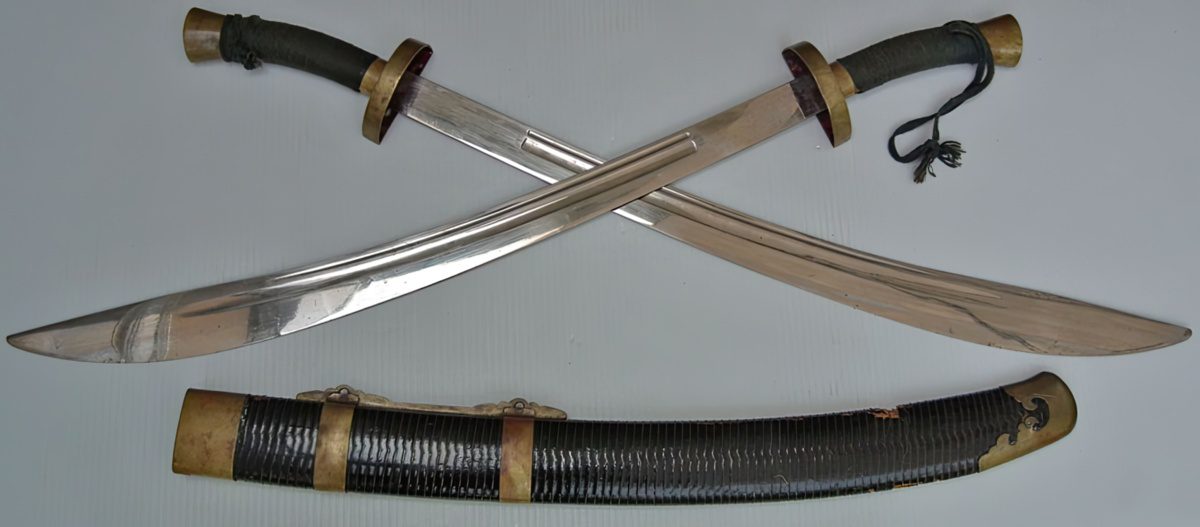
What’s in this article?
Depending on their time in history, several Chinese weapons and swords have adapted to certain needs, such as better mobility, pleasing aesthetics, and slashing and cutting power. The Chinese Niuweidao sword (牛尾刀) is one of the latest sword inventions in the arsenal of Chinese broadswords that is an excellent slashing blade against unarmored opponents.
The Niuweidao is commonly known as the “oxtail saber” due to its broader blade shape. Like the Miaodao and Liuyedao, it is one of the most popular swords used by Chinese martial artists today. In this article, we will discuss the origins of this Dao blade, its visual and structural characteristics, and how they were best put to use.
Characteristics of the Niuweidao Sword
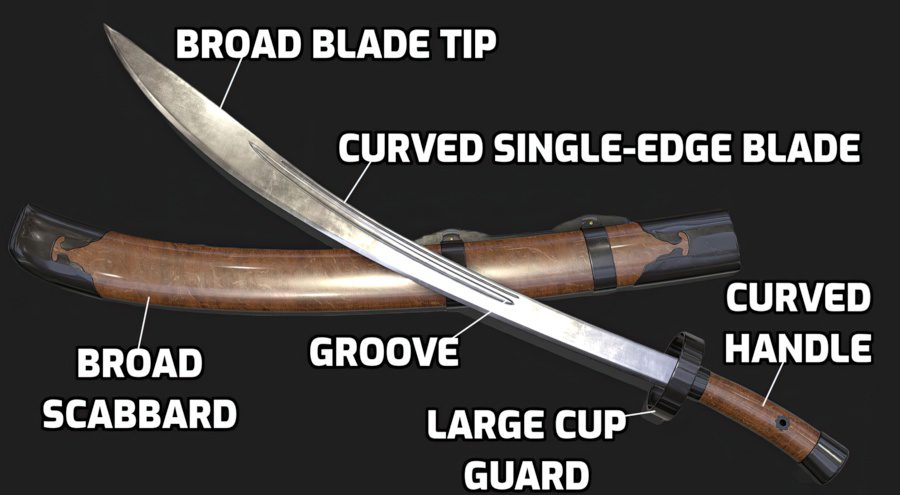
The Ox-tailed sword, or the Niuweidao, is one of the easiest Chinese weapons to recognize, mainly because of its flaring tip. It is a Dao sword, meaning it’s a single-edged bladed sword that is curved and has a broader, heavier blade. One very big difference it has with other Chinese swords is its guard.
Blade
The blade of the Niuweidao sword is curved and single-edged, meaning sharpened and able to inflict gashes from only one side. The blade’s curve strengthens the slashing ability, especially against unarmored opponents, and its sharpened blade tip also renders it useful for thrusting.
The blade has a groove in the center, a piece of metal taken out to lessen the weight and give better stability to the sword. The typical blade length for the Niuweidao sword is around 29 inches (75 cm).
Guard

The Niuweidao has a cup and round Chinese guard made out of metal which offers fairly good protection for the user’s hand and was sufficient enough when the sword was in use. This cup might seem unorthodox to some sword enthusiasts.
Cup Guard
The reason behind this is that it has space inside and is unlike some typical styles of guards. There are many speculations as to why this shape of a guard is used, but it is certainly not to keep the blood of the enemies, as speculated on the internet. It is made in a wider and bigger fashion so that the scabbard, also wider because of the widening of the blade tip, can fit perfectly.
Handle
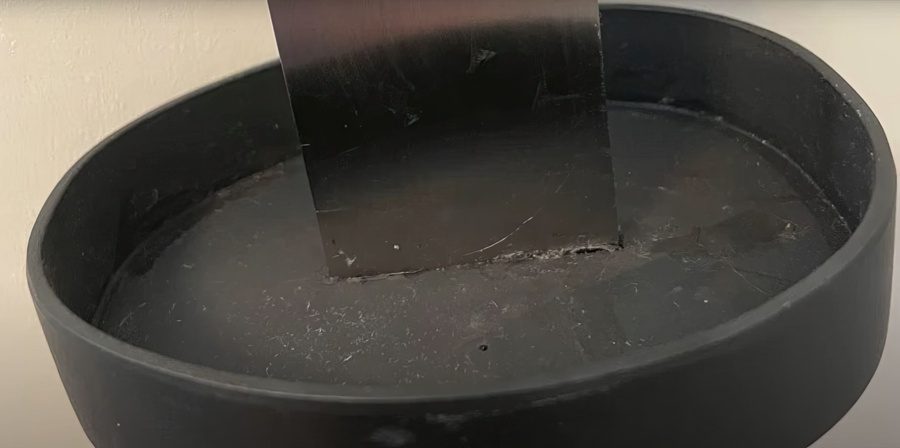
This 19th-century Dao sword has a handle that is also curved downward and narrowed toward the blade to allow for a much sturdier grip, giving better mobility and swift slashing attack opportunities. The handle is usually made of plain or hard wood with iron mounts holding it together, but Chinese handle wrapping can also be present.
Being a Chinese sword used in Kung Fu or Wushu, it has a hole through the lower half of the handle, or a ring on the pommel, so the Chinese sword tassel or lanyard can go through. However, the basic Niuweidao sword has a regular metal cap holding the full tang blade together. The handle length of the Niuweidao is usually around 6 to 8 inches (15 to 20 cm).
Scabbard
The resting place for the blade of the Niuweidao is inside a fairly broader and curved scabbard. It is usually made of wood and features a lacquer for better endurance and brass or metal fittings. It can also have P-shaped openings to be tied with rope or a lanyard on the waist.
Weight
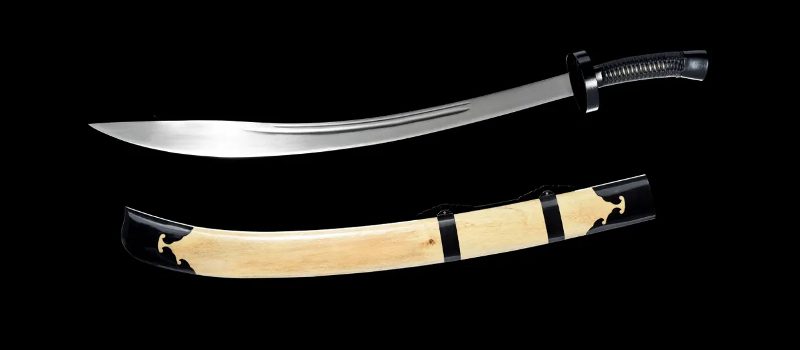
The Niuweidao is not a relatively long sword but can weigh quite a bit because of the widening shape of the blade. The most usual weight range for the Ox tailed saber is around 2.2 lbs (1 kg) which can vary depending on the material it is being made of. If the Niuweidao is used for training or entertainment, it can be around 1.1 lbs (500 grams).
Length and Size
The most common overall length for the Niuweidao sword is 33 to 37 inches (85 to 95 cm), which means that it isn’t a short sword. The point of balance for this ox-tailed blade is 4.5 inches (11 cm) from the handguard.
Use of the Niuweidao
The Niuweidao is a single-edged and one-handed sword. Its whole design and shape are made so that it can be used with quick and very effective slashing motions against unarmored opponents, which were frequent during its origins. It can also be used for thrusting, but the flaring tip going upward and the handle narrowing downward make it primarily a slicing and slashing weapon.
There are cases where the Niuweidao can also be used as a dual-wielded weapon. The width of the blade is thin enough so that even two Niuweidaos can be placed inside the same broad handle, and just the guard would be half on each sword.
Warfare
The Niuweidao was a very popular instrument of war used in China during the 19th and 20th centuries. It was fairly easy to produce and had a crude look, making it easy to master by folks with various levels of experience. Thanks to these factors and the blade shape effective against flesh, its use spread throughout local militias and was used by policemen and common folk for defense. In some cases, it was used by rebels.
Martial Arts and the Chinese Sword Dance
With time this sword became a favorite to many students of Chinese martial arts, making it one of the most popular training weapons today, raising it to a level even with that of the Japanese Katana. Its wide use in entertainment and traditional Chinese sword dances makes it seem like the archetypical Chinese saber used in China for centuries prior.
Modern
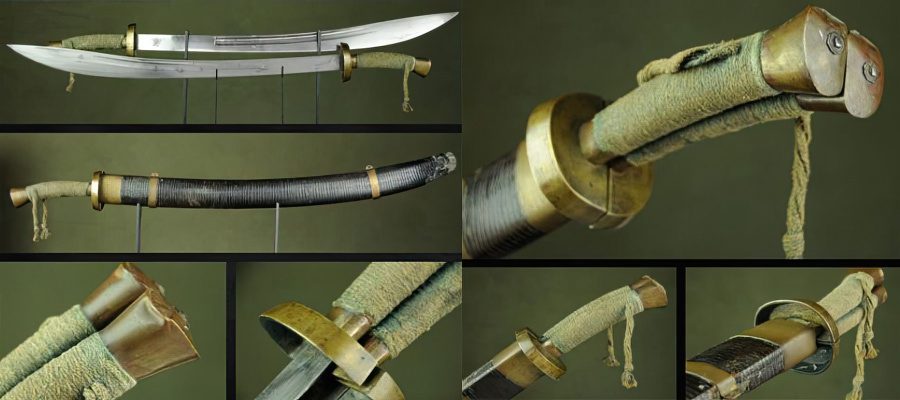
Today the Niuweidao can be seen all over modern media, such as in Chinese or Hollywood movies and anime. Most of the time, it is depicted as an ancient sword, but this is incorrect. It is an excellent decorative stainless steel sword to own or test a Chinese sword’s cutting power by using high-quality carbon steel on objects.
Is it Beginner Friendly?
Training and using the Niuweidao as a beginner Chinese sword can be mastered with the right instructor. Though the broadened blade tip might come off as unconventional for some, it might not be the best choice for a beginner Chinese Dao user.
History of the Niuweidao Sword
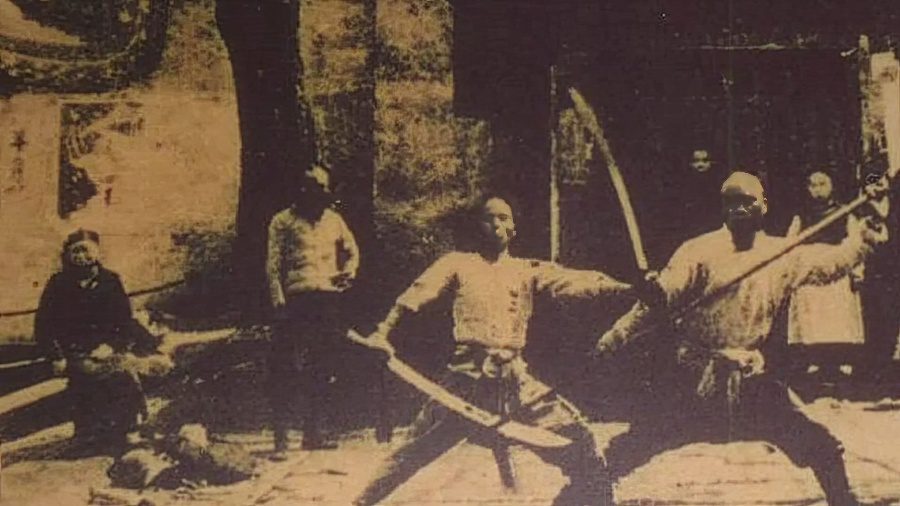
The Niuweidao sword is a Chinese weapon with origins in the 19 century. The term Niuweidao directly translates to Ox Tailed Saber to describe its blade and handle shape. Still, the term is most likely a collective jargon or, quite possibly, a neologism because there aren’t traces of it in historical texts.
This type of blade was crafted because of the need for stronger cutting power in China that would be cheap to produce, easy to master, and would effectively cut through flesh. In a time when firepower was abundant, and there was very little armor, the Niuweidao sword was the perfect blade for all.
The Ox Tailed Saber was developed in North China in civilian circles and started as a weapon for self-defense. Then it quickly spread throughout the population and was used by local militias, police, security guards, and even by rebels trying to make use of the chaotic situation of the late Qing Dynasty.
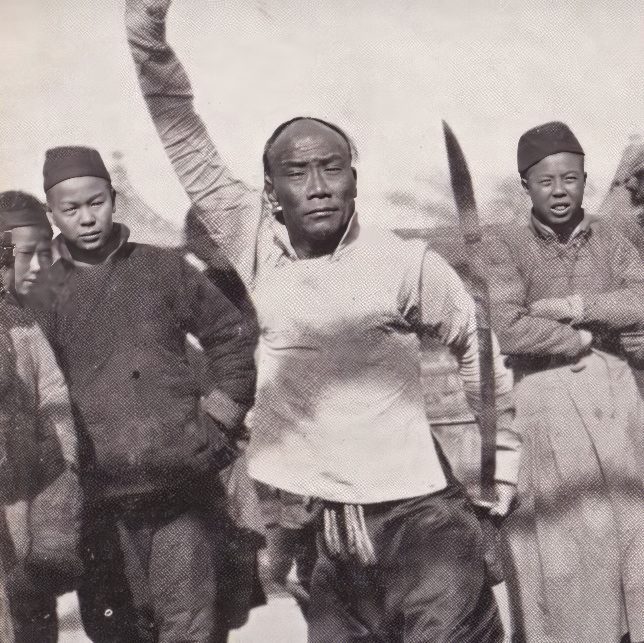
This Chinese sword was also used in the Warlords era of China during the 20th century and could be seen in both world wars mainly because the local populace needed any type of tool for self-defense when guns were scarce. Combined with the Dadao swords, the Niuweidao came in handy for survival.
When the warfare and chaos ended, the Niuweidao became a favorite of Chinese martial artists, much like the double-edged straight Jian sword. Its early shape most likely did not have such a wide blade tip, but the later editions show it as such. It quickly developed into the flexible type of Chinese blade used in all Chinese sword dances today.




